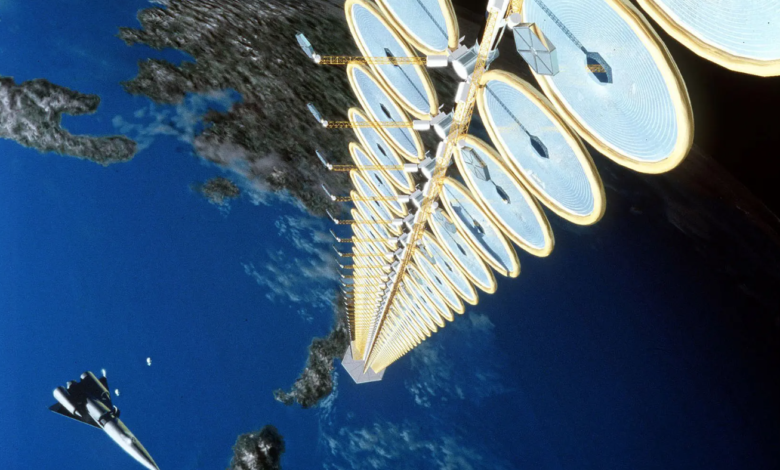Space photovoltaic power plants, do they offer an advantage?

Space photovoltaic power plants could be a (costly) reality in 2050
– The first experiments on the ground and between the stars have already been started but before seeing real space photovoltaic power plants activated, it will have to wait a few decades. And their electricity production will probably be more expensive than terrestrial alternatives. This is reported by a recent study by NASA, the US Space Agency. The agency, like its colleagues around the world, is considering the best way to support solar energy in orbit. And today it is actively engaged in the development of technologies for its current portfolio of missions, which will indirectly benefit the segment. However, some fundamental questions remain open, starting with what challenges will be faced in the coming years.
Solar panels in orbit, advantages and disadvantages
Space photovoltaic power plants involve the collection of solar energy in orbit, the transmission of this energy to one or more stations on Earth, the conversion into electricity and delivery to the grid or batteries for storage. Proponents argue that the approach could deliver large amounts of 24-hour electricity without interruption, at competitive prices and with lower greenhouse gas (GHG) emissions than terrestrial renewable technologies. Skeptics believe that the approach does not have a clear path of development, with the risk of diverting billions of dollars from more mature and known land solutions, while damaging the environment.
The NASA Office of Technology, Policy and Strategy (OTPS) study aims to clarify the conditions under which space solar energy is a competitive option for decarbonisation of the planet.
Two models in comparison
“This analysis compares the life-cycle cost of two space-based solar concept systems to their net emission reduction potential,” said Charity Weeden, who leads NASA’s OTPS. The two systems in question are: the Swarm Innovative Heliostat derived from the Alpha Mark III concept that involves the use of space reflectors and a concentrator to focus sunlight on ground PV systems; the Mature Planar Array, derived from a project of the Japanese Space Agency, which uses flat panels, with solar cells facing away from the Earth and radio frequency emitters (RF) facing the Earth.
Assuming a 2 GW space photovoltaic power plant active for both systems in 2050, scientists performed a life cycle study. They then compared LCOE and the intensity of greenhouse gas emissions with the values of terrestrial renewable technologies. In the first case, an LCOE of 0.61 dollars/kWh was estimated, with the main cost factor represented by the launch of the system (71% of the total). In the second case LCOE is equal to 1.59 dollars/kWh, with the launch representing 77% of the total cost.
“Our results – writes NASA – indicate that space solar energy projects can generate greenhouse gas emissions per unit of electricity in the life cycle comparable to terrestrial alternatives, pending further studies on the effect of launch emissions in the upper atmosphere. We believe that these projects are more expensive than land-based alternatives and could have life-cycle costs per unit of electricity 12 to 80 times higher. However, cost competitiveness can be achieved through a favorable combination of cost and performance improvements related to launch and production that go beyond the progress assumed in the baseline assessment”.





